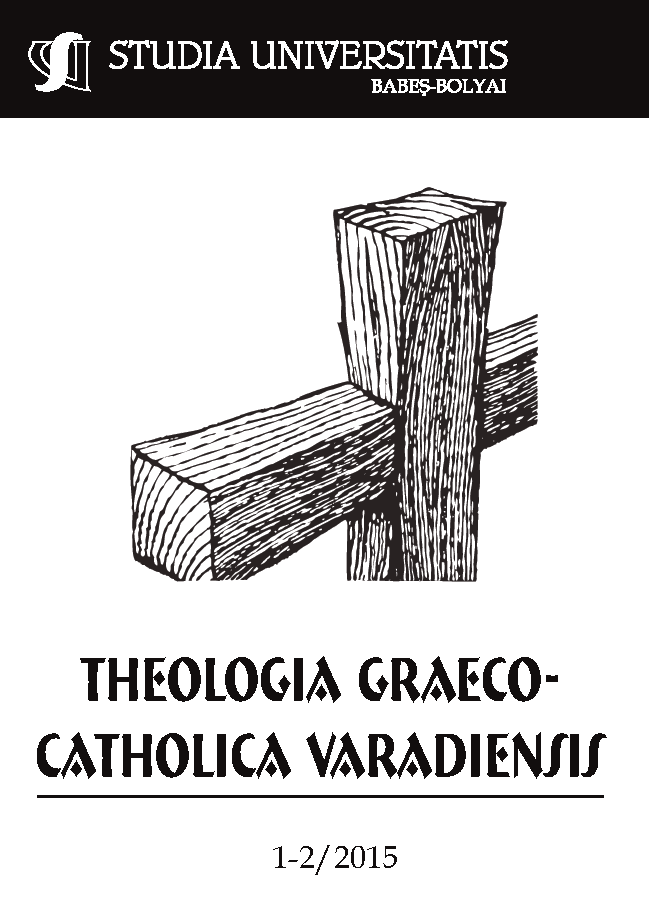DOCTRINA MARIANĂ A LUI NICOLAE CABASILA
Keywords:
Humanism, Hesychasm, Palamism, synergy, Mariology.Abstract
Nicolae Cabasila’s Marian doctrine. Nicolae Cabasila is an authentic example of humanist and theologian who, despite the fact he lived during XIVth century and he was contemporary with Symeon the New Theologian, he fascinates us even to this day with the “profundity of his mysticism” that could be considered ”forever abreast with the time”, being inspired by the grace of Holy Spirit. If the IVth century can be theologically considered the “Christological cycle”, as O. Clement puts it, by the “Trinitarian theology”, XIVth century has a corresponding importance by the palamite theology which, in V. Lossky’s thought, represents a real and unique “pneumatological cycle”. In this context of theological, but also cultural, philosophical and literary revival and florescence, Nicolae Cabasila will come to light. Although he was a Greek oriental theologian, he will be rediscovered also by the East as early as the Council of Trent. The article will bring forward a few guiding lines about the author’s life and works followed by detailing his position in the context of Byzantine Hesychasm. The final part will deal with Cabasila’s Mariology synthetically, a subject that shows a great theological richness and profundity. For that matter, a popular Eastern researcher of his work stated: “No one in the Byzantine Empire or anywhere else, at least in that era, has spoken more highly about the God-bearer as Cabasila”.
REZUMAT. Doctrina mariană a lui Nicolae Cabasila. Nicolae Cabasila este un autentic model de umanist şi teolog, care deşi a trăit în sec. al XIV-lea, contemporan fiind cu Simeon Noul Teolog, ne fascinează şi astăzi prin „profunzimea misticii sale” ce poate fi considerată o „capodoperă mereu actuală” fiind insuflată de către harul Spiritului Sfânt. Dacă secolul al IV-lea poate fi considerat din punct de vedere teologic ca fiind „ciclul cristologic” precum subliniază O. Clement, prin fundamentarea „teologiei trinitare”, secolul al XIV-lea, are o importanţă analogă prin teologia palamitică care în gândirea lui V. Lossky, reprezintă un adevărat şi propriu „ciclu pneumatologic". În acest context de renaştere şi înflorire teologică dar şi culturală, filosofică şi literară va ieşi la lumină şi Nicolae Cabasila, care deşi este un teolog oriental grec, va fi redescoperit şi de occident încă din timpul conciliului din Trento. Articolul va prezenta căteva repere despre viața și opera autorului urmate de aprofundarea poziției sale în conextul isihasmului bizantin. Partea finală va trata în mod sintetic mariologia lui Cabasila, care este de o mare bogăție și profunzime teologică. De altfel, un cunoscut cercetător apusean al operei sale afirma: „Nimeni la Bizanţ, şi nici altundeva, cel puţin în acea epocă, nu s-a exprimat mai bine despre Născătoarea de Dumnezeu precum Cabasila”.
Cuvinte cheie: umanism, isihasm, palamism, sinergie, mariologie
Downloads
Published
How to Cite
Issue
Section
License
Copyright (c) 2015 Studia Universitatis Babeș-Bolyai Theologia Graeco-Catholica Varadiensis

This work is licensed under a Creative Commons Attribution-NonCommercial-NoDerivatives 4.0 International License.





 ©Studia UBB Theologia Graeco-Catholica Varadiensis. Published by Babeș-Bolyai University.
©Studia UBB Theologia Graeco-Catholica Varadiensis. Published by Babeș-Bolyai University.